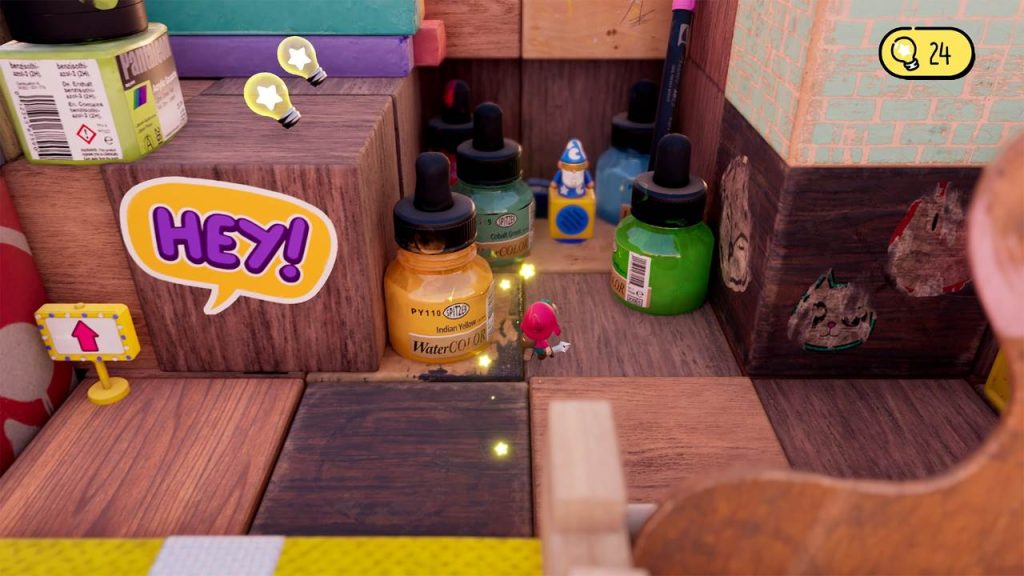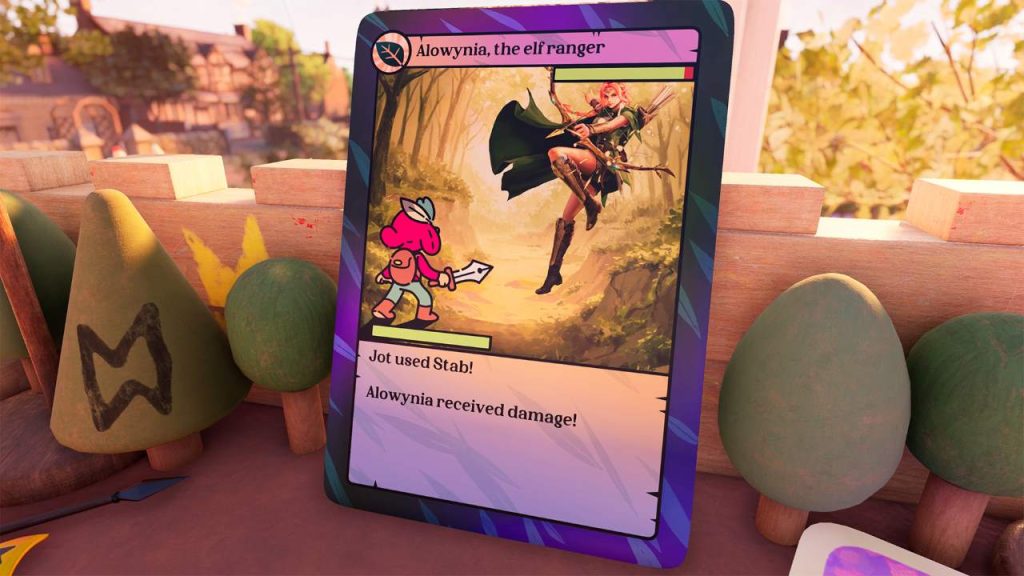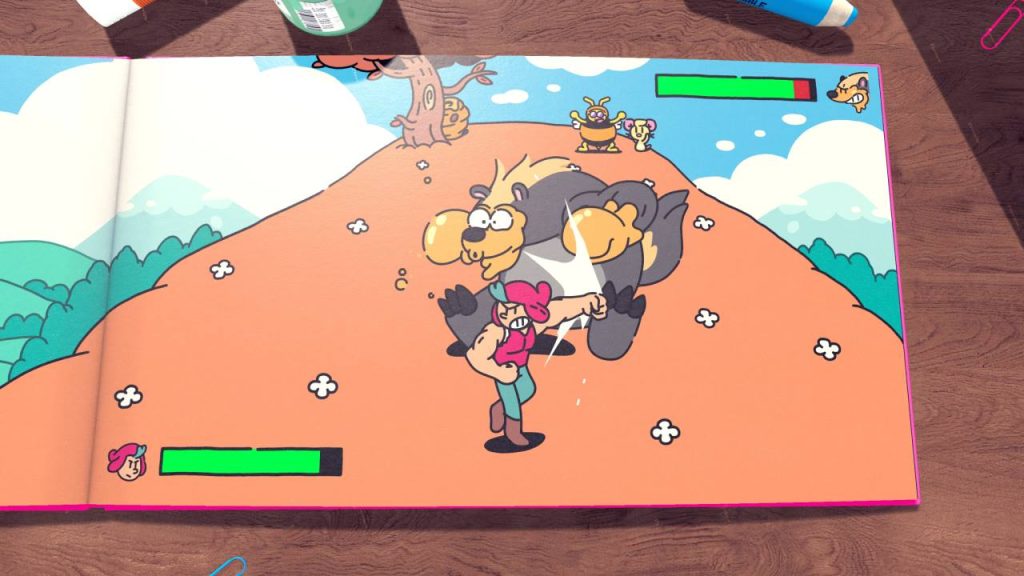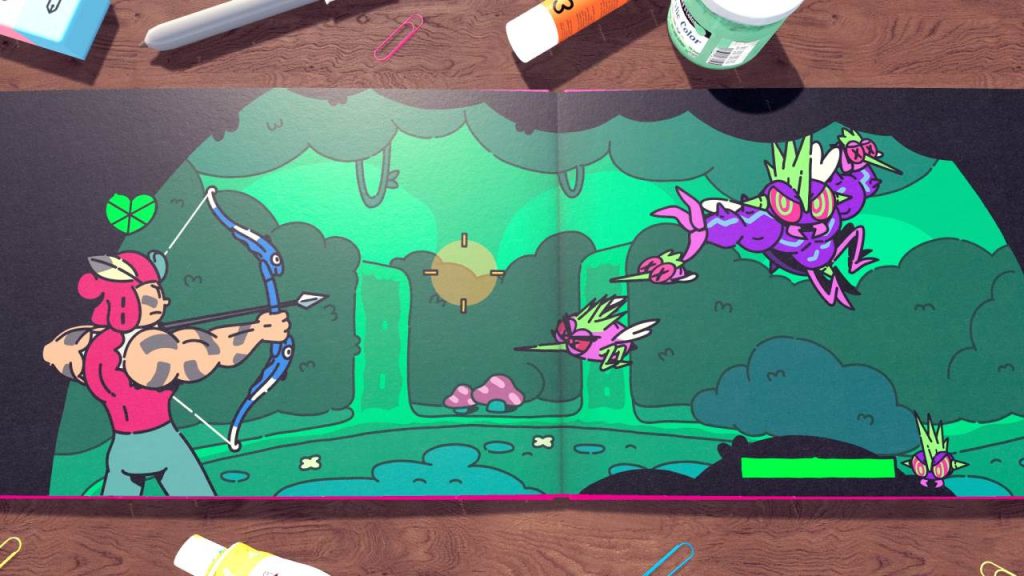The Plucky Squire Review
The Plucky Squire Review
Table of Contents
Video games are ever-evolving, yet only a few titles manage to capture the wonder of storytelling quite like The Plucky Squire. Fun and charming, this game promises a unique blend of 2D and 3D gameplay, wrapped in a narrative that feels like a storybook come to life.
The Plucky Squire follows the adventures of Jot, a brave hero living within the pages of a storybook. The story begins as our hero discovers that the evil wizard Humgrump is on a quest to rewrite their tale, one where he always loses. To change his fate, Humgrump kicks out Jot from the book using sorcery, leaving the story wide open for the evil wizard to take over.
Let’s join Jot in stopping the evil wizard in this review of The Plucky Squire!
Once Upon a Time
One part of the gameplay of The Plucky Squire is reminiscent of the classic Legend of Zelda titles, taking on a top-down perspective while going through the pages of the book that serve as the “levels” of the game. Exploration is mostly straightforward as Jot moves from page to page, with areas that are just right for enjoying the sights.
Visually, The Plucky Squire is utterly enchanting, offering a whimsical tone filled with endearing characters, adorable creatures, and places worth exploring. The dialogue is witty and engaging, as if reading from an actual children’s book, making it suitable for players of all ages.
The game’s art style is suitably colorful, with a hand-drawn aesthetic that brings the world to life. Each environment is meticulously detailed, whether in the 2D environments or the 3D landscapes, with smooth and expressive character animations that add to the overall charm of the game.

Controls are simple and responsive, and even combat is nothing too complicated, where enemies take on movement and attack patterns that are quite easy to read, placing emphasis on the overall experience over enemy encounters. That doesn’t mean that combat doesn’t evolve, as Jot can use a combination of melee attacks and special abilities to defeat enemies, such as a jump and spin attack, which can be purchased from merchants across the world.
Where the 2D sections focus on a top-down theme, the 3D sections feature more traditional action-adventure combat, with a focus on exploration and puzzle-solving. The puzzles are cleverly designed, often requiring players to use both 2D and 3D perspectives to find solutions. These puzzles range from simple tasks, like moving objects to create a path, to more complex challenges that test players’ problem-solving skills.

Fill in the Blanks
One of the most striking features of The Plucky Squire is its innovative gameplay mechanics. The game effortlessly blends 2D and 3D gameplay, creating a dynamic experience that is reminiscent of Game of the Year awardee, It Takes Two.
The transition between 2D and 3D is not just a visual gimmick but an integral part of the gameplay experience. Puzzles often require players to think outside the box, switching between “dimensions”, like a puzzle that might involve manipulating objects in the 3D world to affect the 2D environment, or vice versa. This mechanic keeps the gameplay fresh as players must constantly adapt to new challenges.

For example, one puzzle offers a play on words, where you can change out a word in a sentence to open up the path before you. In one area, the words written show “The Gate is closed,” and Jot will have to find the “Open” word in the vicinity and swap things out to open the gate. This is a simple example, but later puzzles will require more thought and resourcefulness from the player.
The Plucky Squire pushes creativity, offering a mix of gameplay modes during certain sequences. One part of the game will have Jot battle a foe similar to a Punch-out game, while another is a side-to-side shooter a la Resogun. The variety of offerings here is amazing and really changes things up to keep the playthrough refreshing.


The Plucky Squire takes about 9-11 hours to finish, depending on how you go about things, but rest assured that every hour is delightful.
Steam Deck Goodness
Even though it wasn’t Steam Deck Verified back during our preview, The Plucky Squire performed admirably when playing on the go. Now, the developers have made it official as the game is verified, ensuring a smooth time on Valve’s handheld.
To hit a steady 60 FPS, I used the following settings:
- 60 FPS frame limit
- TDP set to 10 or 11
- Scaling Filter FSR
- FSR sharpness 2
As you can see, it doesn’t take a lot to run the game at a smooth clip. While this can partly be attributed to its storybook visuals, The Plucky Squire looks fantastic, whether during the 2D or 3D sequences, and it is safe to say the game is well-optimized too.

Verdict: Buy it!
The Plucky Squire is a creative triumph and certainly lives up to the hype ever since it was first announced. The full experience is wonderful, often employing a change of mechanics from one level to the next, keeping players on their toes with fresh gameplay.
The Plucky Squire deserves a spot on anyone’s list of titles to look forward to this year. It is a refreshing game amidst the barrage of AAA titles, and certainly a reminder that falling back to depend on a creatively fun and polished experience can do no wrong.
*The Plucky Squire was reviewed on a PC/Steam Deck with a review code provided by the publisher.
The Plucky Squire
The Plucky Squire is a creative triumph and certainly lives up to the hype ever since it was first announced.
PROS
- Vibrant and charming visuals
- Flawless performance
- Fluid gameplay and responsive controls
- Lighthearted story
CONS
- Simple combat mechanics
- Some creative sections could have used more exposure





